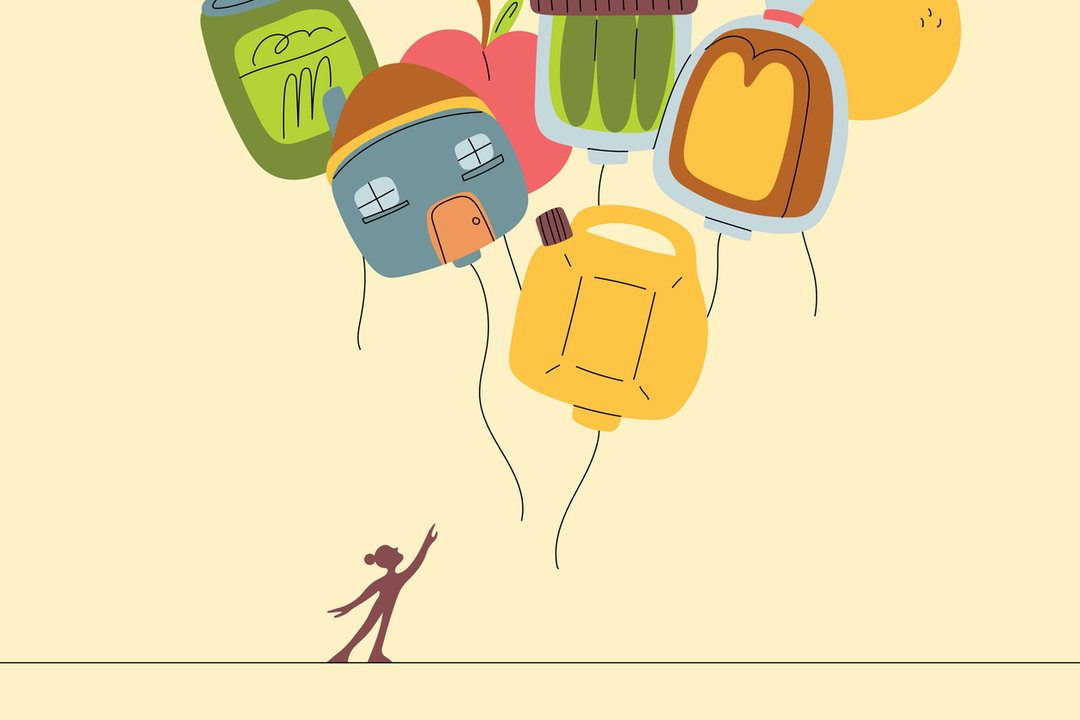
By Enda Curran
July 7, 2023
A prolonged period of elevated inflation has left consumers cranky and eager to cast blame. Higher prices for goods and services have proved more resilient than the US Federal Reserve and other central banks had predicted. That’s encouraged theories and explanations that are shorthanded into buzzwords and phrases, including these.

iStock image
Excuseflation
The pandemic and Russia’s invasion of Ukraine both had material impacts on the availability of goods and services. Worker shortages and disruptions to supply chains sent costs higher. One example: The cost of shipping goods in a container from Asia to the US, typically around $2,000, soared as much as 10 times higher. Executives say they needed to pass along their own increased costs to protect their margins. Skeptics see excuses at play. As a Chicago-area baker told Bloomberg’s Odd Lots podcast late in 2022, global news events create opportunities to increase prices “without getting a whole bunch of complaining from the customers.” In a much-cited March paper, Paul Donovan, chief global economist at UBS AG, said developed economies had entered a period of “profit-led inflation,” which he defined as “when some companies spin a story that convinces customers that price increases are ‘fair,’ when in fact they disguise profit margin expansion.”
Practically synonymous with excuseflation, but carrying more attitude, is the phrase ...
Greedflation
This contentious term imputes selfish intent — in the form of opportunistic profiteering or price gouging — to those who are still charging more for their goods and services. It expresses suspicion as to why prices for some goods and services have remained elevated long after pandemic-era supply constraints were largely fixed. Not everybody is fond of the term. Since capitalism “is supposed to be driven by greed,” Bloomberg Opinion columnist John Authers wrote, the real question is when greed crosses into exploitation. “Drawing that line is difficult, but it’s there,” he added. That companies raise prices in response to shortages “is not only defensible but desirable,” the Economist magazine wrote in a recent piece calling greedflation a “nonsense” idea. “The alternative to letting the price mechanism bring supply and demand into line is to rely on something worse, such as rationing or queues.”
Those seeking a higher-brow alternative to greedflation might be inclined toward ...
Sellers’ Inflation
This is the term used by Isabella Weber of the University of Massachusetts, Amherst, to distinguish this period of inflated prices. Large corporations with market power “have used supply problems as an opportunity to increase prices and scoop windfall profits,” she wrote in December 2021. Put another way, these sellers are choosing “price over volume” — another phrase in the news — as the path to higher revenue. Weber has urged serious consideration of price controls, an economic tool rarely used since World War II that’s begun to re-enter policy discussions.
Consumers compiling reasons to blame companies for their pain can also cite ...
Shrinkflation
Get Businessweek in your inbox.Bw Daily delivers unique perspectives every weekday.Sign up to this newsletter
Think of this as inflation in disguise. The premise is that the bag of coffee or box of cereal that we buy at the supermarket comes in smaller packaging, meaning there’s less product, but the price remains the same — if not higher. In the UK, where food inflation is proving particularly sticky, two-thirds of consumers have noticed some products have shrunk and 83% are concerned the trend is growing, according to a study by Barclays. This can also play out as declining quality in customer service (reduced operating hours, for example) or declining standards in what goods are offered for sale, reflecting cost-cutting behind the scenes.
Where does all this leave the tapped-out consumer? Relief will come eventually, in the form of ...
Disinflation
This is when the pace of inflation is slowing (even if it remains elevated), like a car after the accelerator is released. That appears to be what’s happening in the US, where the Fed’s preferred measure of inflation, the personal consumption expenditures price index, rose just 0.1% in May, the slowest pace in more than two years. While disinflation can occur during times of economic strength, as innovation and worker output bloom, usually it reflects a slowing economy. But disinflation, where prices are still rising, should not be confused with deflation, a general decline in prices that’s a warning sign of a troubled economy.
And the truly faithful can look for signs of ...
Immaculate disinflation
One of the prime phrases of the moment, this captures the optimistic notion that the Fed, or any central bank, can bring prices under control without driving up unemployment. That’s a challenge because higher interest rates — the leading tool to combat inflation — also can bring about an economic slowdown. True believers say the current cycle will defy that pattern because labor markets in many advanced economies remain tight, suggesting inflation can slow without the jobs market falling over.
© 2025 Bloomberg L.P.


